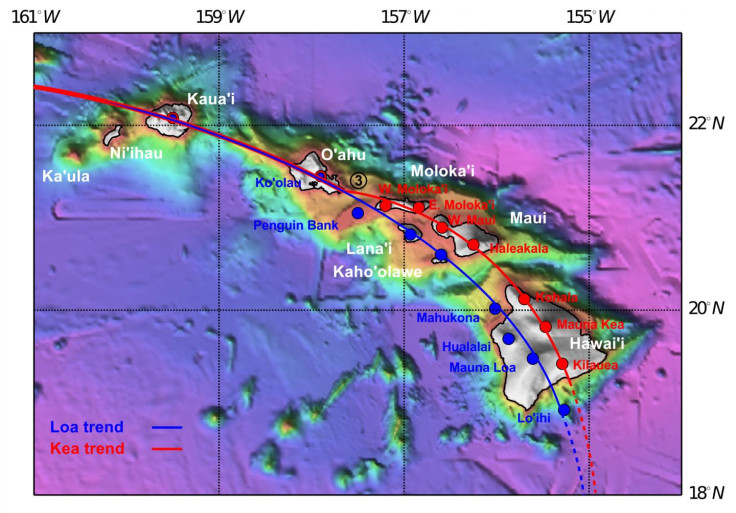Scientists solve 168-year-old mystery of how the world's biggest, most active volcanoes were formed
The largest volcanoes known to man exist in Hawaii.
The largest volcanoes known to man exist in the cluster of islands that make up the American state of Hawaii. What makes these volcanoes stand apart from others across the globe is the fact that they were formed along two separate yet close tracks. Although scientists were aware of these twin tracks since 1849, what caused the formation of the volcanoes remained a mystery till now.
Now, scientists at the Australian National University (ANU) have solved the 168-year-old mystery.
The ANU scientists uncovered that the volcanoes were formed 3 million years ago, due to a shift in the Pacific Plate's direction. Tectonic plates are humungous pieces of rocks that lie beneath both oceans and continents.
The study titled "The concurrent emergence and causes of double volcanic hotspot tracks on the Pacific plate," published on Wednesday (4 May) in Nature, noted that twin volcanic tracks found in Hawaii also exist in other parts of the Pacific, including Samoa. Researchers found that these too, emerged around 3 million years ago.
Tim Jones, lead researcher of the study, said that this kind of volcanic activity was unusual as it occurred away from the tectonic plate boundaries, which is where most volcanoes are commonly formed.
"The discovery helps to better reconstruct Earth's history and understand part of the world that has captivated people's imagination," said Jones said in a statement. "The analysis we did on past Pacific Plate motions is the first to reveal that there was a substantial change in motion 3 million years ago. It helps to explain the origin of Hawaii, Earth's biggest volcanic hotspot and one of the most popular tourist destinations in the world."
Researchers noted that the twin volcanic tracks called Loa and Kea were formed in Hawaii when when heat from the Earth's core caused hot columns of rocks called "mantle plumes" to rise under the tectonic plates.
"Mantle plumes have played a role in mass extinctions, the creation of diamonds and the breaking up of continents," Jones said.
"Our hypothesis predicts that the plate and the plume will realign again at some stage in the future, and the two tracks will merge to form a single track once again," Dr Rhodri Davies, co-researcher of the study said. "Plate shifts have been occurring constantly, but irregularly, throughout Earth's history. Looking further back in time we find that double tracks are not unique to young Hawaiian volcanism - indeed, they coincide with other past changes in plate motion."

© Copyright IBTimes 2025. All rights reserved.






















